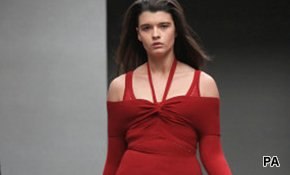The majority of the British public is critical of the fashion industry’s almost exclusive use of thin models, a YouGov survey has found.
82% agree that models should represent ‘more usual body shapes’ because ‘models should represent the people who will be buying the clothes’. Often, those within the industry suggest that fashion should be ‘aspirational’ and not representative of the average consumer. But while 55% agree that the focus of fashion should be on the clothes as opposed to the models, only 28% agreed with the ‘aspirational’ argument. 56% disagreed.
In fact, responses implied a general concern for the impact the use of skinny models is having on public health. 79% of people feel that using thin models encourages people to ‘try and achieve an unrealistic and unhealthy body shape’.
Accordingly, a very similar percentage (77%) thought having bigger models would ‘send out a positive message to the public’. This concept has begun to seep into industry chiefs’ consciousness, and several high-fashion labels, including Jean Paul Gaultier and Chanel, have used larger models in recent years, including Crystal Renn (pictured), who is a UK size 16. However, despite these nods to ‘normality’, tall and thin is still the norm.
And although many find fault with the use of thin models, a significant 42% feel that in doing so, the fashion industry is merely responding to ‘society’s perception of beauty’. However, 48% disagreed with this claim. It seems people’s perception of attractiveness may not be as slender as the business may think.









